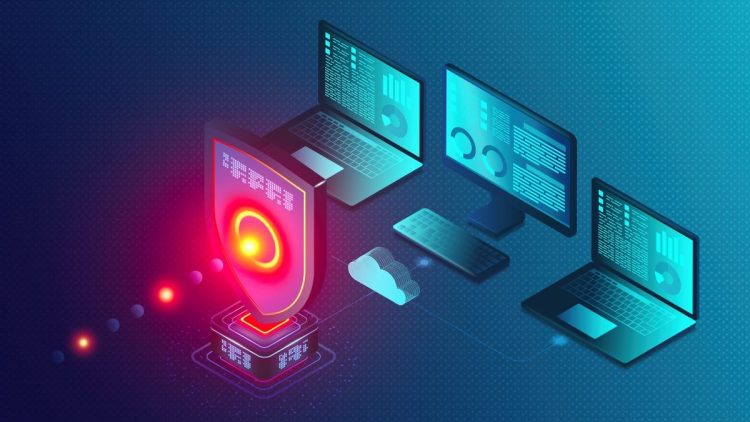Most organizations lack insight into the state of their exposed and outdated endpoints, as well as the safety of their remote and hybrid workers. IT and security teams are often overwhelmed with conflicting priorities, only prioritizing patching after an intrusion or breach occurs. Cybercrime gangs and state-sponsored threat actors have a better understanding of a target’s network than the admins themselves. It’s crucial to acknowledge that whoever owns the identities within a business also owns the business, as demonstrated by devastating ransomware attacks. Negligence when it comes to the identification and patching of remote and hybrid workers’ endpoints is equivalent to leaving the doors of a home unlocked while on vacation.
A recent report by Ivanti revealed that 60% of enterprises are only aware of less than 75% of the endpoint devices on their network. Additionally, only 58% of organizations can identify every attacked or vulnerable asset on their network within 24 hours of an exploit. Shockingly, organizations fail to identify up to 40% of their endpoints. This complacency poses a significant risk to the security and stability of businesses.
Raising Awareness and Implementing Unified Endpoint Management
Ivanti’s 2023 report highlights that only 43% of IT professionals currently use unified endpoint management (UEM), making it an underutilized system in the context of protecting remote and hybrid workers. The report emphasizes the need for a holistic digital employee experience (DEX) strategy that encompasses vulnerability management and patch management at scale.
Patching is an area often deferred by IT teams, primarily due to complexity and time constraints. 71% of IT and security teams find patching to be overly complex, cumbersome, and time-consuming. Remote work and decentralized workspaces further exacerbate the challenges of patch management, as stated by 57% of professionals. The typical enterprise’s patch management activities are triggered by a breach, intrusion, or external event 61% of the time. Consequently, IT teams react and prioritize patch management to mitigate the impact of the breach.
According to Absolute Software’s 2023 Resilience Index, 52% of endpoints are not fully patched or updated, making them vulnerable to attacks. Furthermore, remote endpoints are typically three months behind on patches, with an average of 126 vulnerabilities (54 of which are critical). The prevalence of applications installed on remote endpoints is also concerning, with an average of 77 applications per device. The dark web has become a marketplace for tools and applications designed to exploit the limited security measures in place for remote and hybrid workers.
The Dark Web’s Rising Threats and the Role of AI in Patch Management
The dark web has witnessed a 238% increase in attacks targeting remote workers over the past three years. This growing trend highlights the need for AI and machine learning (ML) in automating patch management and addressing vulnerabilities that attackers exploit. Leading providers of patch management solutions, such as Automox, Canonical, ConnectWise, Flexera, Ivanti, Kaseya, ManageEngine, Syxsense, and Tanium, offer AI-based tools to assist in prioritizing, validating, and applying patches.
“With more than 160,000 vulnerabilities currently identified, it is no wonder that IT and security professionals overwhelmingly find patching overly complex and time-consuming,” says Srinivas Mukkamala, Chief Product Officer at Ivanti. “This is why organizations must utilize AI solutions to assist teams in prioritizing, validating, and applying patches. The future of security is offloading mundane and repetitive tasks suited for a machine to AI copilots so that IT and security teams can focus on strategic initiatives for the business.”
The use of AI in patch management offers several key benefits. It helps optimize deployment timing based on device availability, usage patterns, and contextual intelligence, which is particularly crucial for VPN-independent systems. AI and ML algorithms analyze vulnerability data, threat intelligence, and business criticality to prioritize high-risk patches for remote devices. Additionally, predictive patch scheduling leverages AI to identify optimal maintenance windows for each remote employee based on observed habits and connectivity strength.
Implementing AI-powered patch management systems provides organizations with greater visibility and control, delivering accurate patch inventories, hardware information, and full device configuration. This automation alleviates the burden on help desks and ITSM teams while ensuring timely patching.
CISOs and CIOs face numerous challenges in achieving stronger vulnerability and patch management. It is vital to view patch management as an ongoing commitment and a fundamental aspect of an organization’s overall security posture. With attackers continually exploiting vulnerabilities, automating patch management and integrating AI solutions enables teams to focus on strategic initiatives and protect their businesses from potential breaches.










